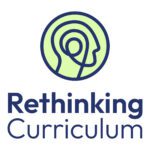Building a creative model of education: Examining creative concepts in a primary school setting

 This article has been published as part of the Rethinking Curriculum project, kindly funded by The Helen Hamlyn Trust.
This article has been published as part of the Rethinking Curriculum project, kindly funded by The Helen Hamlyn Trust.
Dr Emma Webster, Assistant Head of School, Prendergast Primary School
Context
We are a relatively new primary school, established in 2014 in South East London. From the outset, we knew we needed a curriculum that met the needs of our learners while reflecting our ethos. We are passionate about creativity, cultural capital and the wider, holistic experiences of education that we can offer.
Our first cohort consisted of children with high levels of deprivation, low parental engagement and limited learning experiences beyond the classroom. It was these children that inspired careful consideration of our curriculum, teaching and learning approaches, and an ambition to shift the culture of our school.
Our focus
We aimed to nurture and develop creativity in these children, acutely aware of the challenges they faced in achieving conventional academic outcomes. We recognised the need to invest in the whole child to support their success as 21st century learners and citizens. After an initial pilot study experimenting with different curriculum delivery models, we concluded that it was the teachers we needed to target first, alongside redesigning and implementing a new curriculum.
Drawing on existing literature and our own aims and ambitions, we identified three key areas for development:
- The role of the individual teacher
- The curriculum as a creative tool
- The role of the learning environment(s)
We designed the implementation process (Sharples, Albers & Fraser, 2019) to ensure effective cultural change, recognising that this would take at least two to three years. The implementation process was deliberately flexible, mirroring the creative process we aimed to nurture in the classroom. We also ensured all staff had a clear understanding of how we expected this to work.
Our key questions were:
- What is involved in teaching creatively?
- How is creativity nurtured in the primary classroom through creative teaching and teacher creativity?
Curriculum and pedagogical approach
Our work aimed to explore how key elements of primary education synthesise to enable creative teaching practice and provide a model of creativity for teachers. These elements included the curriculum as a tool for creative teaching practice, the learning environment as a co-facilitator to creativity and the teachers themselves as creative practitioners. The work sought to establish a practical model for creativity, focused on practice in the classroom.
Creative teaching, or teaching creatively, means taking an active, practical approach. It places teachers and their practice at the forefront, recognising their instrumental role in fostering creativity. We therefore focused on how to address this change across the school. Teachers became active participants rather than passive recipients, applying key literature and research to their own practice.
Key approaches included:
- Teacher questionnaires to gather understanding of creativity as a concept, teachers’ perceptions of their own creativity, and noticing shifts in creative teaching practice. These were used at different stages of the three-year journey to ensure the implementation process was effective and to assess whether it needed to adjusted.
- Curriculum reviews to establish how curriculum changes worked in the classroom itself. The results of these reviews were used by leadership to make necessary changes within appropriate timescales.
- Teacher CPD to ensure there was transparency about the changes being made and understanding of the literature that underpinned it, including key relevant models of creativity (Kaufman & Beghetto, 2009). Findings were shared, opinions were listened to, and honest feedback was encouraged. Subject- and skill-specific sessions also upskilled teachers with creative teaching approaches and encouraged them to take more risks in their practice.
- Working parties to enable leaders to work closely with groups of teachers on subject-specific curriculum development, understanding and identifying how creativity was transferable between subject areas.
- Learning environment audits to allow teachers to scrutinise spaces around the school, using research as a guide (Davies, et al. 2013), and identifying how they could be used more creatively.
In the first year, we focused on teacher ‘buy-in’ through CPD sessions and working parties as well as formalising the first draft of the curriculum. Skills were the ‘golden thread’ of our curriculum, providing teachers with guidance in developing both subject-specific and creativity-specific skills. The curriculum also allowed for authentic cross-curricular links and made explicit reference of how to use outdoor learning spaces.
Throughout the second and third years, we continued with our CPD programme and working parties, but also undertook questionnaires, monitoring activities, reviews and pupil discussions to understand how the three key elements contributed to greater creative awareness.
Findings and implications
Although our initial aim was to redesign the curriculum, our work highlighted the many interconnected strands that foster more creative teachers and, ultimately, more creative students. It proved vital to first develop effective creative teaching practice, as it holds the potential to nurture creativity in young learners. Teachers, curriculum design and learning environments each play a distinct role in this process. These areas also reflect the various models of creativity and the holistic process involved in nurturing creativity. Below, they are translated and analysed within the context of a primary school, and with potential implications for primary education more broadly.
Teachers as the individual: Teachers are as much the drivers of creativity as they are the individual within whom it should be developed. Teachers are at the very core of education, and for creativity to be effectively nurtured in pupils, their own creative growth is essential.
Curriculum design as the context and process: The what and how of education are fundamental. Domain content is vital as a springboard for creativity. The way in which a curriculum is designed and purposed enables teachers and learners to make connections, challenge, and innovate. Our curriculum placed skills at the heart, established authentic cross-curricular connections, and enabled a range of creative contexts and outcomes to be explored.
Learning environments as the place and motivation: Providing learners with the space to take risks, feel supported and be sensorily engaged fosters intrinsic motivation, connection-making, and celebration of each step of the creative process.
Recommendations
The impact of this study on our setting has been significant, and there has been a cultural shift in how teachers develop their own creativity and nurture it in their learners. Teachers display greater confidence in their practice and in shaping creative experiences for learners. Teacher planning has improved, learning outcomes are more varied and relevant to pupils, learning environments are utilised more effectively and there has been a marked increase in openness of sharing ideas and willingness to take risks. Authentic cross-curricular learning is evident across the school and pupils are more confident to talk about connections between areas.
However, it is important to recognise that the findings of this are specific to our setting, and not all cases would demonstrate the same level of change. Despite this, the lessons learned from it can perhaps help to influence policy and practice in other contexts, from understanding the importance of purpose, to focusing on authentic processes rather than short-lived products, that support the nurturing of creativity in both learners and teachers.
Recommendations for other school leaders:
- Creativity should be celebrated in all areas of education and made a priority for teacher development for the purpose of the learners.
- The curriculum should be well-designed to facilitate creativity, alongside the synthesis of knowledge and skill, using cross-curricular approaches.
- Creativity should be adopted as a leadership style; leaders should be open and flexible in their approaches and demonstrate a strong awareness of the relevance of the creative process to implementing change, supporting colleagues and driving school improvement.
- Learning environments should be crafted to support creative learning, e.g. through working walls in the classroom that are actively utilised by both pupils and teachers and celebration of ‘the product’ through displays in shared school spaces.
- Teachers should be supported to understand the importance of creativity.
Potential directions for future work in this area:
- Teacher training: Teachers are the drivers of change on the ground, but the pressures placed upon them and disparities in the quality of training programmes mean that creativity is often pushed down the agenda. Unifying and prioritising how teachers are trained in creative pedagogies and practices could lead to further success in nurturing creativity.
- Curriculum design strategies: Further research is needed into purposeful curriculum design that considers the individuality of school settings, 21st century priorities and authentic cross-curricular approaches.
- Assessment of creativity: In education, assessment leads to value. Building on the work of Torrance (1984), further research into effective assessment of creativity could enhance its status and deepen understanding of how to nurture it.
- Psychology of creativity: This work was not driven by psychology but understanding how to achieve creativity in students and teachers could impact on how creativity is effectively nurtured.
- Longitudinal studies: There is great potential to carry out longitudinal studies on both the application of recent creativity theory, but also the practical implications emerging from this study.
- Subject-specific creativity: In primary education teachers are generalists, but there is potential to explore how the creativity of each subject could be further understood and nurtured.
- Creative capital: Building on the concept of cultural capital, creative capital (Florida, 2002) recognises the need to engage students with opportunities that foster creativity, critical and independent thinking, and curiosity from a young age to ensure they can make contributions to creative industries and society. Florida argues that communities thrive economically and socially when creative individuals engage with them, and school leaders should consider how to prepare children and young people to become authentic creative individuals who can make positive contributions to 21st century life.
References
Baer, J. (2010) Is creativity domain specific? In J.C. Kaufman & R.J. Sternberg (Eds.), Cambridge Handbook of Creativity (321–341). New York: Cambridge University Press.
Craft, A. (2001) An analysis of research and literature on creativity in education. Qualifications and Curriculum Authority, 51(2), 1-37.
Davies, D., Jindal-Snape, D., Collier, C., Digby, R., Hay, P. & Howe, A. (2013) ‘Creative learning environments in education—A systematic literature review’, Thinking Skills and Creativity. Elsevier, 8, 80–91.
Florida, R. (2002). The rise of the creative class: And how it’s transforming work, leisure, community and everyday life. New York: Basic Books.
Jeffrey, B. and Craft, A. (2004) ‘Teaching creatively and teaching for creativity: Distinctions and relationships’, Educational Studies, 30(1), 77–87.
Kaufman, J. C. and Beghetto, R. A. (2009) ‘Beyond Big and Little: The Four C Model of Creativity’, Review of General Psychology, 13(1), 1–12.
Sharples, J., Albers, B. & Fraser, S. (2019) Putting Evidence to Work: A School’s Guide to Implementation. London: Education Endowment Foundation.
Smith, J. K., & Smith, L. F. (2010) Educational creativity. In J. C. Kaufman & R. J. Sternberg (Eds.), The Cambridge Handbook of Creativity (250–264). New York: Cambridge University Press
Torrance, E.P. (1984) The role of creativity in identification of the gifted and talented. Gifted Child Quarterly, 28(4), 153-156.
Webster, E. (2023) Building a creative model of education: A case study analysing key creative concepts in a primary school setting. Doctorate in Education (EdD) thesis, University of Buckingham.

 This article has been published as part of the Rethinking Curriculum project, kindly funded by The Helen Hamlyn Trust.
This article has been published as part of the Rethinking Curriculum project, kindly funded by The Helen Hamlyn Trust.








